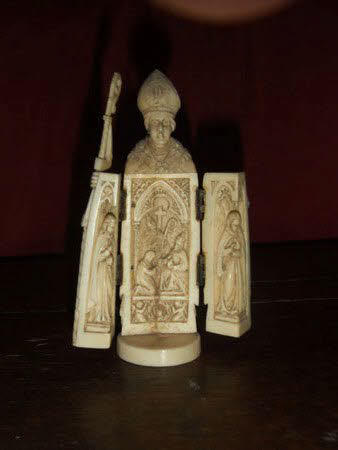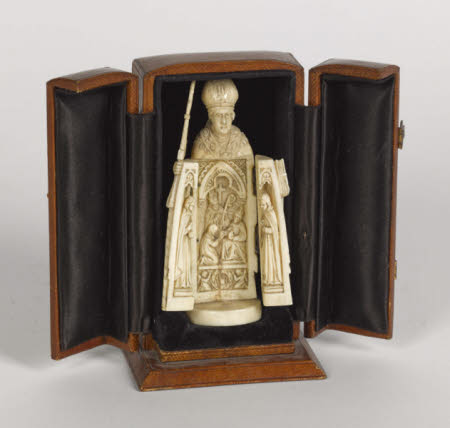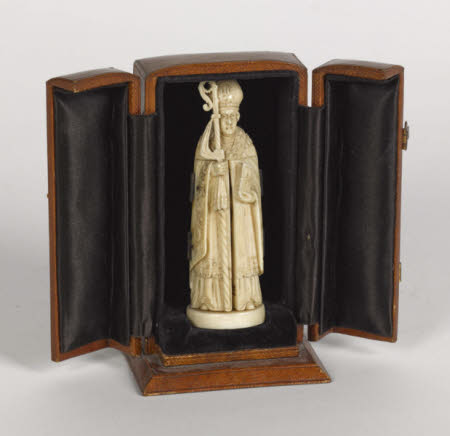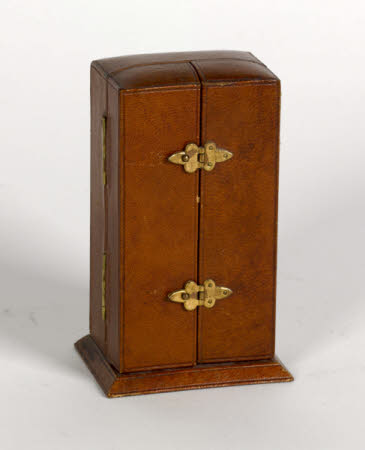A Bishop Saint
Roy Coles
Category
Art / Sculpture
Date
c. 1840 - 1900
Materials
Ivory.
Measurements
35 x 25 mm
Place of origin
Dieppe
Order this imageCollection
Mount Stewart, County Down
NT 1655921
Summary
Sculpture, ivory; A Bishop saint; French, Dieppe, c. 1825-1900. A carved ivory triptych figure depicting a bishop saint, which opens to create a triptych with a scene from the saint’s life in the centre. The figure, made in Dieppe in the nineteenth century, still has its original leather case in brown leather.
Full description
A carved ivory figure of an unidentified bishop saint, depicted wearing episcopal robes and on his head a mitre, holding an episcopal staff in his right hand and a book in his left. A separately carved oval base. The lower part of the figure opens to create two wings attached by hinges to the main body, which when opened reveal a central narrative scene flanked by two standing figures of acolytes. In the central scene, a seated figure of a king blesses or presents a gift to a hooded and robed figure, a monk or possibly a woman, whilst behind stands a bishop, probably the subject of the ivory, who raises his hand in blessing. The figure retains its original brown leather case. The Ivory figure is one of two among Edith, Marchioness of Londonderry’s collection of religious sculptures and pictures that she kept in a corner of her bedroom at Mount Stewart. The other (NT 1655920) depicts Saint Elizabeth of Hungary. They are examples of a type of figure that was made in large numbers in Dieppe, the most famous centre in France for ivory carving, during the second half of the nineteenth century. The concept derives from a rare type of medieval ivory figure known as the 'Vierge ouvrante' or ‘the Virgin that opens’, a figure of the Virgin Mary that would open out into a triptych, revealing carved reliefs with stories from her life. The Dieppe triptych figures are typical products of the romantic period, many depicting famous historical figures ranging from the medieval period to the early nineteenth century, from Joan of Arc or Mary, Queen of Scots through to the Emperor Napoleon I (for more details, see NT 1655920). The number of figures from British history depicted suggests that they were especially popular in Britain and Ireland, where nowadays they quite frequently appear in auction sales. Jeremy Warren August 2022
Provenance
Probably acquired by Edith, Marchioness of Londonderry (1878-1959); by descent to Lady Mairi Bury (1921-2009); accepted by HM Government in lieu of Inheritance Tax and allocated to the National Trust, 2013.
Makers and roles
Roy Coles, sculptor



